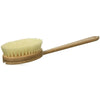Toxic Toothpaste Alert: Studies Find Popular Toothpastes Contain High Levels of Arsenic, Lead, and Mercury

Introduction
Most of us grab our toothpaste each morning expecting a fresher smile and healthier mouth. But a recent wave of independent lab tests may give many health-conscious consumers pause. Popular toothpaste brands—even those targeted at children and marketed as “natural” or “green”—have been found to contain concerning levels of dangerous heavy metals, including lead, arsenic, mercury, and cadmium.
What the Latest Testing Reveals
A comprehensive test of 51 toothpaste brands, conducted by consumer advocacy group Lead Safe Mama and covered by The Guardian, delivers a disturbing verdict:
- About 90% of all toothpastes tested contained detectable lead
- 65% contained arsenic
- Just under half showed mercury content
- One-third contained cadmium
These results were not limited to niche or off-brand toothpastes. Major names like Crest, Sensodyne, Tom’s of Maine, Dr. Bronner’s, Davids, and Dr. Jen were among those found to contain one or several hazardous heavy metals.
Brands and Varieties at Risk
Particularly alarming is that elevated levels were found in toothpaste and tooth powders marketed for children and products promoted as “green” or natural. Health-conscious shoppers often turn to such brands, assuming a safer or cleaner formula, only to find themselves, and their families, at risk.
Why Are Heavy Metals in Toothpaste?
Heavy metal contamination in toothpaste is rarely intentional. Instead, it stems from the raw materials manufacturers use to craft these products. Tamara Rubin, founder of Lead Safe Mama, highlights common ingredients as the likely culprits:
- Bentonite Clay: Used for its cleaning properties, but can be contaminated with lead and arsenic depending on its source.
- Hydroxyapatite: Often sourced from cow bones and added for remineralization, but testing has shown it may bring in lead and cadmium.
- Calcium Carbonate: A gentle abrasive aimed at stain removal, but also shown to be a route for contamination.
Rubin’s independent ingredient tests revealed that both hydroxyapatite and calcium carbonate samples carried measurable lead, while formulas heavy on bentonite clay showed the highest contamination levels.
Health Risks of Lead, Arsenic, Mercury & Cadmium Exposure
No level of lead exposure is considered safe, especially for children. The U.S. Centers for Disease Control and Prevention (CDC) and other agencies warn that lead can:
- Cause irreversible cognitive and developmental damage in children
- Lead to kidney damage and heart disease in adults
- Increase the risk of cancer due to the carcinogenic nature of all four metals
The World Health Organization, FDA, and numerous other regulatory bodies agree that arsenic, mercury, and cadmium pose serious health risks, from neurological impairment to organ damage and cancer.
How Do Safety Limits Stack Up?
Alarmingly, while many toothpastes exceed state limits for heavy metals, particularly in California and Washington, they still do not surpass currently permissive FDA thresholds:
|
Substance |
California Baby Food Limit (ppb) |
Washington Toothpaste Limit (ppb) |
FDA Toothpaste Limit (ppb) |
|---|---|---|---|
|
Lead |
6 |
1,000 |
10,000–20,000 (depending on fluoride) |
|
Arsenic |
Set for food, not toothpaste |
No federal limit |
No federal limit |
|
Mercury |
Set for food, not toothpaste |
No federal limit |
No federal limit |
|
Cadmium |
Set for food, not toothpaste |
No federal limit |
No federal limit |
Most tested toothpastes exceeded the baby food safety limits but not the laxer federal standards for dental care products. Many health advocates, including Lead Safe Mama, argue that these FDA standards are outdated and fail to protect consumers, particularly children.
Industry Response & Regulatory Gaps
When contacted about these findings, major toothpaste brands pushed back. Some claimed that trace contaminants are impossible to avoid due to their presence “throughout the environment,” while others contended that the detected lead, arsenic, and mercury were within “safe” limits.
No brand, so far, has pledged to remove lead or other heavy metals from their formulas. Some even issued cease-and-desist letters to consumer advocates.
One major regulatory effort, the Baby Food Safety Act of 2024, is currently stalled in Congress. Even if passed, it would set strict lead (10 ppb) limits for kids’ foods—but not for toothpaste.
What Can Consumers Do?
Health-conscious consumers hoping to avoid these contaminants should consider the following proactive steps:
- Read Ingredient Labels Carefully: Avoid toothpastes containing bentonite clay, hydroxyapatite, or calcium carbonate unless you can confirm their purity.
- Opt for Transparent Brands: Support brands that openly share lab results for contaminants.
- Check Advocacy Group Rankings: Organizations like Lead Safe Mama regularly publish updated findings on product safety.
- Request Accountability: Contact your favorite toothpaste brands to request current safety or contaminant testing data.
- Push for Stronger Regulation: Add your voice to those pressuring regulatory bodies for safer standards around dental care products, particularly for children.
Final Thoughts
With heavy metals now discovered in some of the most popular oral care products on the market, health-conscious shoppers face another challenging ingredient to keep an eye on. While regulatory agencies debate new rules and industry resists change, consumers looking to protect their family’s health must stay informed and proactive.
Sources consulted:
- The Guardian
- Lead Safe Mama (leadsafemama.com)
- CDC, FDA official guidelines
11 comments

November 20, 2025
Read the Unpublished Intro to What Would Have Been Dr. Clark's Next Book On Cancer
Upon examining old files on a computer CD, we discovered an introduction written by Dr. Hulda Clark in which she explains how each of her successive findings led her to each next book. In this, she explains what her next would would ...
Read more
November 20, 2025
Vaccine Free QuickStart Guide for Parents
Vaccine Free QuickStart Guide for Parents By Larry Cook The vaccine topic is very controversial and the amount of information about this topic on both sides (pro & anti) is staggering. I understand that it can be very difficult for y...
Read more
November 20, 2025
The Science Behind Fennel Essential Oil: A Natural Remedy for Gut Health and Beyond
Fennel essential oil, derived from the crushed seeds of Foeniculum vulgare Mill., has been treasured for centuries in traditional medicine across Mediterranean and Asian cultures. Today, modern scientific research is validating what anc...
Read more




Hello – For those of you who are looking for brands that are safe, I recommend going to the following website for more information and a list of brands tested and determined to be safe choices: leadsafemama.com.
OraWellness.com sells Shine toothpowder, fluoride free and organic. I love it!
Why not present some solutions? Like a good recipe or safe brands? Feels like it’s lacking in this fear based alert to consumers.
The best toothpaste is simply salt & soda. That’s all I use and it was recommended by Edgar Cayce. Best to stay away from the processed commercial stuff.
Which brand do you recommend to consume in America?
Leave a comment